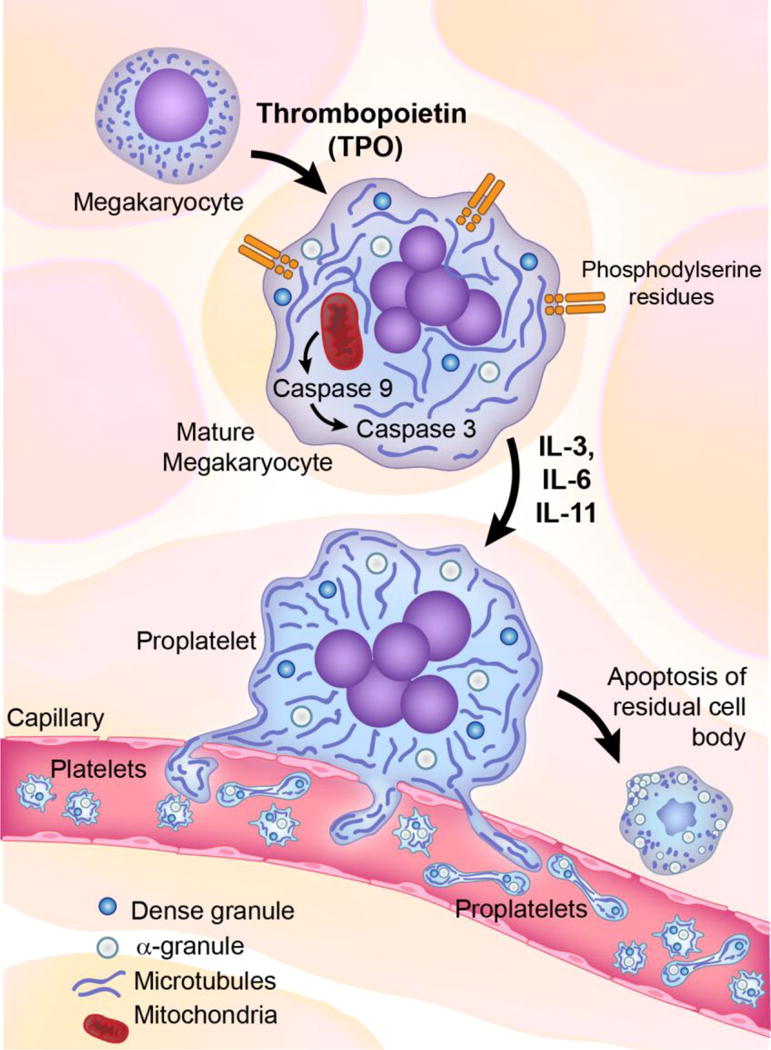Figure 1.

Birth of the platelet. Platelets formation involves mitochondria apoptotic activation. Tpo drives mononuclear MKs precursors to undergo endomitosis and become polyploidy. Further MK maturation results in the accumulation of cytoplasmic components as platelet-specific proteins, organelles and the demarcation membrane system composed of flattened cisternae and tubules. Next occurs the biogenesis of α-granules and dense granules by receptor mediated endocytosis and pinocytosis. Transformation of the MK cytoplasm initiates with erosion at one pole of the cell. Pseudopodial proplatelets extend into the bone marrow sinusoids and project proplatelets into the vascular space. Proplatelet formation is the terminal phase of the MK cycle of life. It is unclear whether MKs release fully formed individual platelets or proplatelet chains within the bloodstream. (Tpo, thrombopoietin; IL, interleukin; MK, megacaryocytes)
